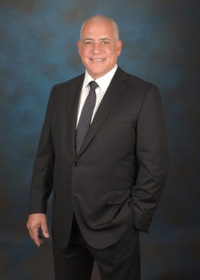Implementation of electronic medical records is growing; however some spine practices still don't see any benefits to implementing one. Here, eight spine specialists and practice managers discuss their experience with EMR implementation and use.
Ask Spine Surgeons is a weekly series of questions posed to spine surgeons around the country about clinical, business and policy issues affecting spine care. We invite all spine surgeon and specialist responses. Next week's question: Should independent spine surgeons consider hospital employment? If so, why?
Please send responses to Anuja Vaidya at avaidya@beckershealthcare.com by Wednesday, March 11, at 5 p.m. CST.
Question: Are electronic medical records a boon or a bane for your spine practice? In what ways?
Bryan Oh, MD, Neurosurgeon, BASIC Spine, Newport Beach, Calif.: Electronic medical records, when fully implemented, can be a  boon. However, getting to the final stage and reaping the benefits of having one can be challenging.
boon. However, getting to the final stage and reaping the benefits of having one can be challenging.
First, there is a learning curve for practitioners and office staff. For staff and doctors who are not comfortable with any EMR, this can lead to decreased productivity and increased frustration up front. Second, there can be issues associated with billing. While full implementation generally leads to more efficient and effective billing and collection, the initial phase can lead to hiccups and glitches in billing and collections. Third, EMRs can lead to the generation of a lot of meaningless documentation that impedes practitioner communication. For instance, EMRs with laborious templates can lead to generation of reports which appear to be computer generated, as opposed to being generated by a practitioner.
But when fully implemented and understood by an entire healthcare team, EMRs can be a boon. With appropriate tasking, the office can run much more efficiently. If billing is integrated properly, claims can be submitted and paid faster. Also, if a member of the healthcare team is absent, ill or quits, another person trained in the system could jump in seamlessly and continue to make the team function well.
 Lloyd Zucker, MD, Chief, Neurosurgery, Delray Medical Center, Delray Beach, Fla.: Our practice was an early adopter of an EHR/EMR system. By doing so some of the benefits related to governmental credits for the technology were achieved. Although it took time to acquaint ourselves to the technology, it has grown into a boon for the practice.
Lloyd Zucker, MD, Chief, Neurosurgery, Delray Medical Center, Delray Beach, Fla.: Our practice was an early adopter of an EHR/EMR system. By doing so some of the benefits related to governmental credits for the technology were achieved. Although it took time to acquaint ourselves to the technology, it has grown into a boon for the practice.
Accessibility to records from any location has untethered us from the office. Point-of-service billing has streamlined a portion of the process. The patient portal has allowed for a more streamlined patient experience. Notes are partially macro-driven with the addition of voice recognition dictation which allows for rapid individualization of notes. Clean coding is ensured as the system ensures that all bullet points are met for each dictation.
We are sure that with the advent of ICD-10, the power of the programs will become even more evident.
John V. Prunskis, MD, FIPP, Founder & Co-Medical Director, Illinois Pain Institute, Elgin: EMR is a testimonial to how a powerful lobby can initiate and get passed a law that has no benefit to patients or physicians. The only benefit to the EMR is for those who are reaping huge profits from selling and maintaining EMRs.

Igor R. Yusupov, MD, Neurosurgeon, Arizona Brain & Spine, Phoenix: It is a bane. We are using NexGen. The system is not flexible and very expensive. There is no way to qualify for meaningful use credit. We are considering switching to Allscripts or eClinicalworks and definitely a cloud-based solution.
William Taylor, Director, Spine Surgery, Vice Chairman, Division of Neurological Surgery, University of California, San Diego: A workload-expander and time-waster that provides no improved communication or patient care.
 Richard A. Kube II, MD, CEO, Founder, Prairie Spine & Pain Institute, Peoria, Ill.: Our practice has mixed feelings regarding the implementation of EMRs. There are some obvious positives such as legibility, decreased staff time for chart preparation and ease in finding studies and notes. The downsides include cost and training as well as having, to some degree, to adopt a template that suits everyone.
Richard A. Kube II, MD, CEO, Founder, Prairie Spine & Pain Institute, Peoria, Ill.: Our practice has mixed feelings regarding the implementation of EMRs. There are some obvious positives such as legibility, decreased staff time for chart preparation and ease in finding studies and notes. The downsides include cost and training as well as having, to some degree, to adopt a template that suits everyone.
In all, we would probably say it has been helpful. Research is easier to perform and patient tracking has capabilities for built in queues. We are able to perform better quality control and perform internal audits which help us manage the practice. We are also able to ze ro in on workflow issues and troubleshoot patient care and experience at a very granular level when needed.
ro in on workflow issues and troubleshoot patient care and experience at a very granular level when needed.
Brian R. Gantwerker, MD, The Craniospinal Center of Los Angeles: It has been both, but there are many features it sorely lacks, like a good iPhone interface.
Cheryl Zapata, Chief Development Officer, Texas Back Institute, Plano: Interesting question, and one I don't think we will really know the answer to for a few years. Electronic medical records have some positive and negative effects on a spine practice.
EMRs offers more flexibility, report ability and accountability than paper records. Many EMR systems allow users the ability to customize the system to meet the needs of the practice. The flexibility of an EMR allows for customization of templates, orders and surgery slips to help get the specific information a user is looking and also allows for following referrals more efficiently and tracking outcomes. Additionally, having the ability to access records from various (secure) locations has had a significant positive impact on how records are managed, particularly in part-time offices.
In the past, trying to track a patient's status, or create reminders to check a patient's status was a cumbersome process. It was often not effective and led to issues like charts lying on desks for several days to await being worked. With an EMR system, reminders can be created electronically and alerts scheduled at the appropriate time. There is no longer the need to keep charts on a desk, because the entire record is immediately available, and you can gather the information you need in one place. This functionality can also be helpful in tracking processes and systems to ensure patients are scheduled in a timely manner and that they do not "fall through the cracks." Additionally, there are times a patient will miss an appointment or miss diagnostic testing for some reason. Accountability functions allow the ability to track that type of situation, and create a flag to contact the patient so as to help get the patient back on track with their treatment program.
I would consider the reporting ability in an EMR system, and the ease of securing the information for that reporting, an incredible advance in medicine. This reporting can be used to develop better protocols for patient care and will be an important tool as it relates to research.
There are some challenges with an EMR system. It changes the way practices with paper records function, and there is an adjustment period. Also, an EMR system could slow a provider down and even become cumbersome to the way he/she practices. Additionally, there is a cost associated with EMRs, and to get full utilization of a system, I would suggest making it more of an ongoing process than a one time set up.
More articles on spine:
Spotlight on a Spine Surgeon Leader: Dr. Alexander Vaccaro of Rothman Institute
21 spine devices receive FDA 510(k) clearance in February
Disc replacement vs. spinal fusion: Cervical radiculopathy — 6 key notes

